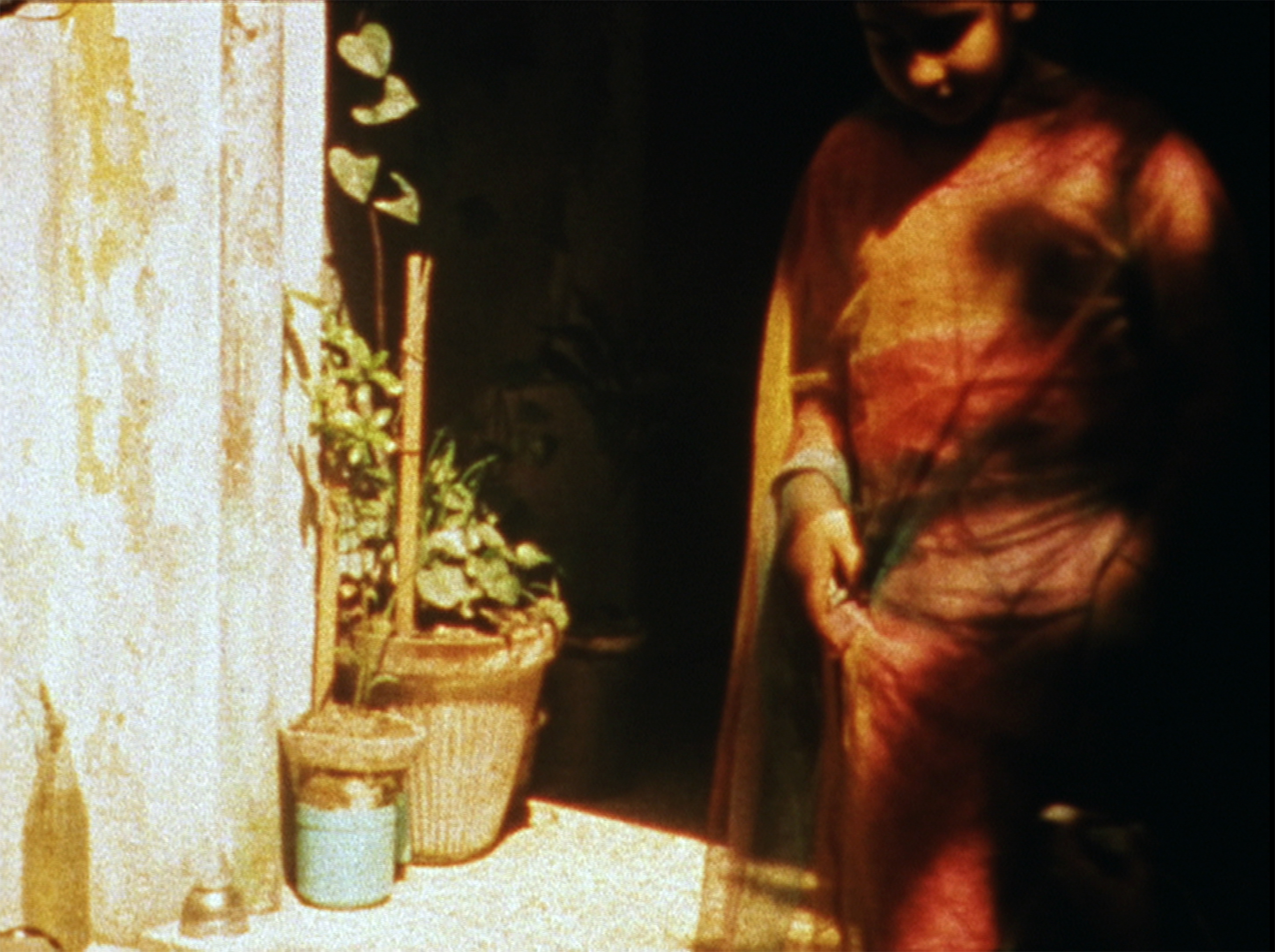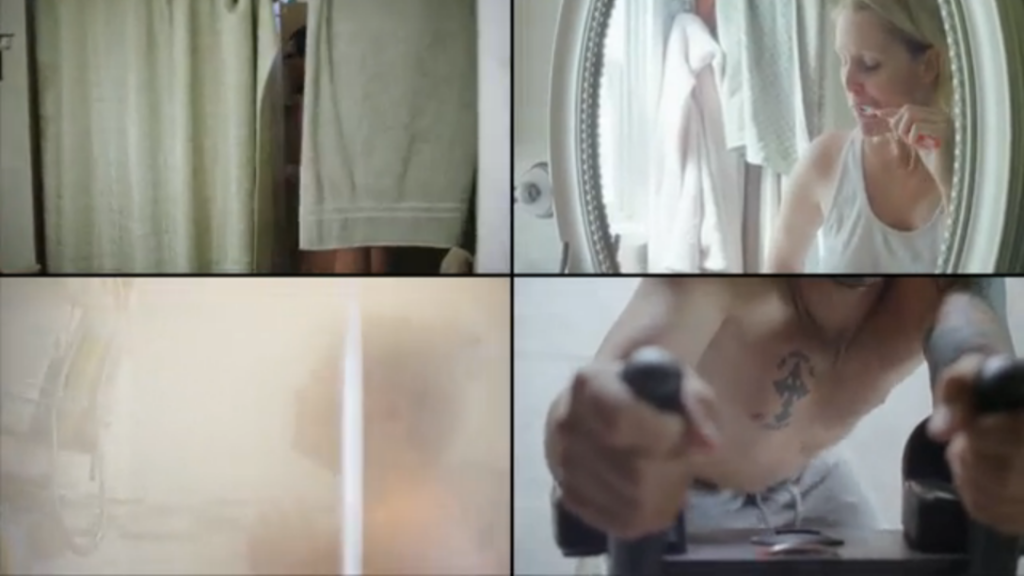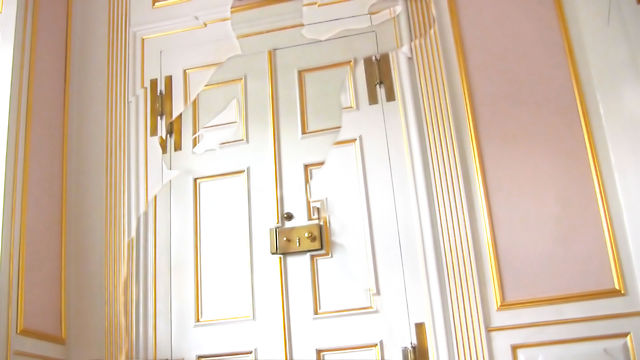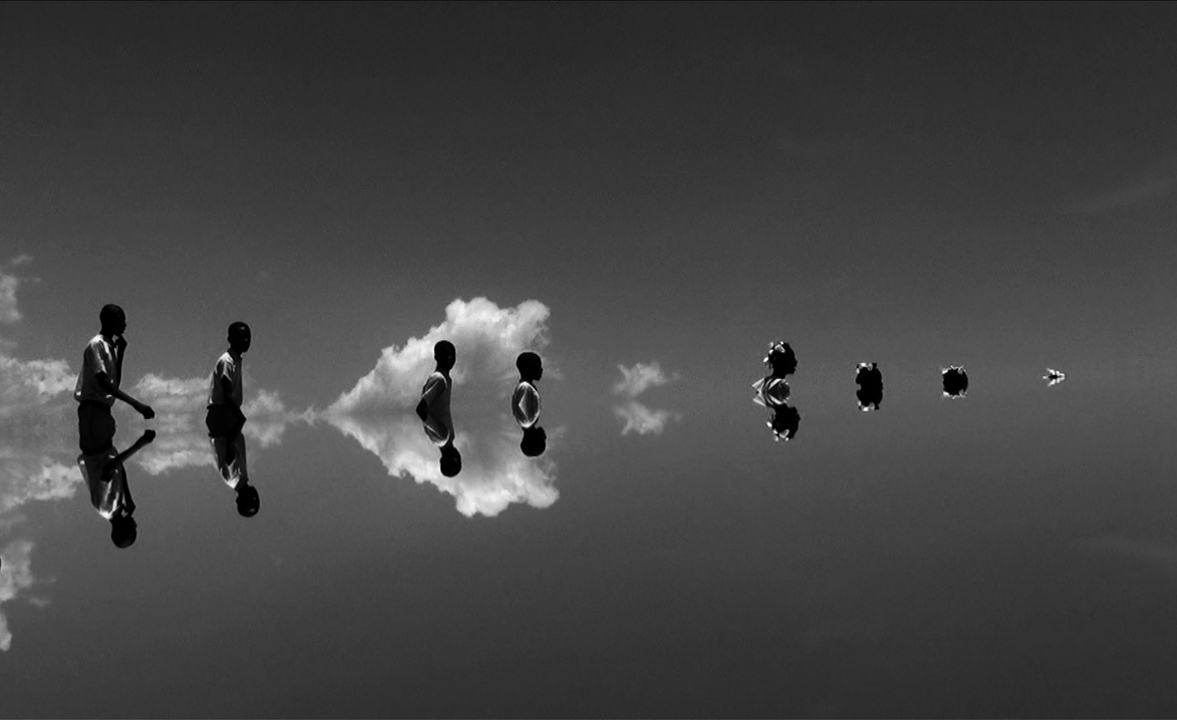Eating Grass
Alia Syed
11 – 17 November
Eating Grass
2003, 22’56”
SYNOPSIS
Filmed in Lahore, Karachi and London and encompassing five stories, each representing different emotional states experienced throughout the day, that are marked by the Muslim tradition of the five daily prayers. The title of the work is a reference to a comment made by President Bhutto of Pakistan in 1974, who, in response to India exploding a nuclear device, promised the Pakistani people that they too would have their own nuclear weapon whatever the cost, even if it meant “Eating Grass”. Moving through daily rituals inside the walls of a haveli in Pakistan to those of life outside, the film encapsulates the passage of time through the changing emotional tones of urban metropolitan life. As the bustle of modern life outside the haveli parallels, and slowly transcends the changing nature of the day’s light, so the film suggests it is possible for the spirit to sublimate. The surreal nature of the work is accentuated by the accompanying voiceover in Urdu and English; its textural and out-of-sync pattern conveys meaning while at the same time building a rhythm of tonal cadences similar to structures found in Indian classical music or jazz.
Courtesy of Talwar Gallery
A Q&A WITH ALIA SYED
Q: In what ways does Eating Grass reflect your ongoing interest in storytelling and language?
A: My stories develop out of lots of different things, but oral culture is very important to me. It is something that I grew up with. I am also interested in fairy tales, myth, and folklore as they are part of our shared experience. I am interested in language; we construct ourselves through language; it creates the space where we define ourselves. Film can be a mirror—it can throw things back at us in a way that makes us question the ideas we have about ourselves and through this each other. What drove me to make Eating Grass in the way that I did was that I was interested in what happens when you hold more than one “culture” within you at any given time. It is a film about Diaspora…[the interview continues here].
Courtesy of LACMA.
“A sentient network of metropolis, language, and scopic energy. The 16 mm film shot in London, Karachi and Lahore, and first shown in London at inIVA, deftly courses through and succinctly captures the associated identity of each locale. In London the intermittent, gray-hued downpour is punctuated by the national marker of a red phone booth; in Lahore an open market pulsates with the energy of vendors and consumers as the day shifts from bright yellow to cautious, achromatic evening light. The partial narrative imparted by voice-over in English and Urdu hints at an unnamed anxiety that resides just below the film’s visual artifice. Resting against and within the vocal narrative is an aural multiplex of natural and industrial sonic rhythm that moves between the cities, into domestic spaces, rests over a haunting oceanic scene of tidal cadences, and, in one sequence, lingers on the simple but alluring vibrations of dripping water from freshly washed laundry. In just over 16 minutes, Eating Grass interweaves a sensuality of mimesis with documentary, landscape, urban, and surreal footage in five segments that reflect minute, habitual shifts in presence and atmosphere.”
Courtesy J. Martin, Flash Art
A FEW LINKS
“Set among the pre-modern Indian paintings and Hindu and Buddhist sculptures of LACMA’s South and Southeast Asia wing, Alia Syed’s Eating Grass (2003) is a dreamy filmic experience. “I dreamt of red wine,” says a female voice in a gentle timbre, ushering the viewer into a reverie that melds storytelling, memories, dreams, poetry and history all into one. This decade-old work, shot in London, Lahore and Karachi, was reinvigorated by its presentation among the gallery’s ancient spiritual heads. The paintings and sculptures too were renewed by the company of this contemporary palimpsest of prose and visual stimuli…” Read more here.
“Eating Grass subtly questions the effectiveness of language in bridging and creating intimacies. Through the use of images, film processing technique, and voiceover in Urdu and English, Syed’s film offers a depiction of memory, displacement, and home. The film portrays the experience of split cultural identities and interpersonal connections—lives that almost, but not quite, line up…” Read more here.
Alia at Cargo Collective here.
ALIA’s LATEST FILM POINTS OF DEPARTURE
The result of Alia’s recent residency at BBC Scotland, part of a project offering six artists unprecedented access to the facilities and archives of the BBC, Points of Departure explores themes of personal and collective memory through the artist’s relationship to the city of Glasgow
Points of Departure is available to view here.
“The objects and places we cannot leave behind create the tapestry that is Points of Departure. Exploring themes of personal and collective memory through my relationship to the city of Glasgow, a voice over describes a tablecloth I retrieved whilst clearing my elderly father’s house. The film attempts to unravel the threads of memory held within this mundane item and to find an image within the BBC archive that relates to my memories of growing up in Glasgow. My father’s unrehearsed attempts to translate an Urdu Ghazal, discovered in the archive, a poetic expression of the beauty of love and the pain of loss exposes a process of translation that becomes the key allowing a path through the labyrinth of both my own memory and the BBC archive.” Alia Syed, 2014.
Courtesy BBC Scotland, LUX and Creative Scotland.
BIOGRAPHY
Solo Exhibitions
2012‐13 Los Angeles County Museum of Art, Eating Grass: Alia Syed, Los Angeles, US
2013 Talwar Gallery, Panopticon Letters: Missive I, New York, US
2010 Talwar Gallery, Wallpaper, New York, US
2009 Museo Nacional Centro de Arte Reina Sofía, Madrid, Spain
2009 Talwar Gallery, Elision, New Delhi, India
2008 Talwar Gallery, New York, US
2006 Millais Gallery, Southampton, UK, A Story Told
2005 Arts Depot, 1001100111001, London, UK, Eating Grass
2004 Talwar Gallery, New York, NY, Eating Grass
2003 Institute of International Visual Arts (inIVA), London, UK, Eating Grass
2003 Talwar Gallery, New York, NY, Spoken Diary / Swan
Selected Other Exhibitions / Screenings
2014 Tate Britain Starr Auditorium, London, UK
2014 Pump House Gallery ,You cannot step twice into the same river, London, UK
2014 CCA, Glasgow, UK (Upcoming)
2014 Solyanka State Gallery, PARAJANOV, Moscow, Russia
2013 5th Moscow Biennale, Moscow, Russia
2011 Glynn Vivian Art Gallery, Ffilm 3, Swansea, UK
2010 The Museum of Modern Art (MoMA), On Line, New York, NY, US
2006 XV Sydney Biennale, Zones of Contact, Sydney, Australia, Eating Grass
2005 Hayward Gallery, BALTIC, The British Art Show VI, UK, Eating Grass
2005 Talwar Gallery, (desi)re, New York, NY, US, Eating Grass, Swan
2003 Tate Britain, London, UK, Fatima’s Letter @ A Century of British Artist’s Films
Full biography available here
FILMOGRAPHY
2010‐13 Panopticon Letters: Missive I
2008‐11 Priya
2006‐11 A Story Told
2010 Wallpaper
2005 L A Diary
2003 Eating Grass
2001 Spoken Diary
1995 Watershed
1994 Fatima’s Letter
1989 Three Paces
1989 Swan
1987 Unfolding
1985 Durga
EATING GRASS CREDITS
Cinematography: Noski Deville, Farjad Nabi, Alia Syed
Camera Assistance: Emily Richardson, Sam Adam, Pete Baldwin, Emma Bailey, Shalalae Jamil, Shahid Karim
Translation: Syed Ali Ahmed, Nasood Nabi, Farooq Saleem
Voice Over: Maryam Rehman
Optical Printing: Genista Dunham, David Leister
Editing Assistance: Genista Dunham, Tanya Syed, Sheena Macrae
Produced by: Alia Syed, Tanya Syed, Maheen Zia
Sound Recording: Farjad Nabi, Maheen Zia
Dubbing Mixer: Chris Trussler
Kathak Dancer: Priya Pawar
Laboratory: Soho Images, Len Thornton
Film Stock: Kodak Eastman
Eating Grass was originally produced with funds provided from Film London and Arts Council England.






